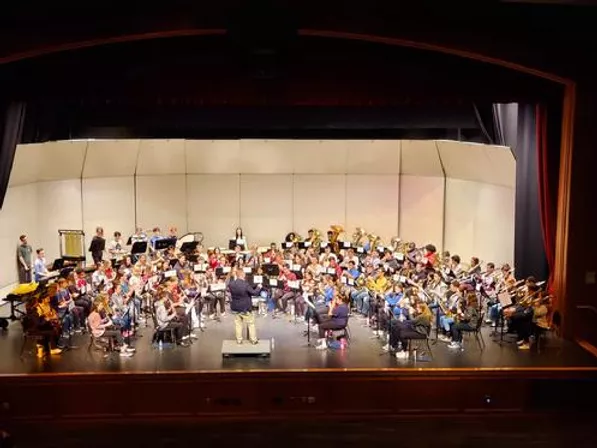Emily’s Weekly Political Scoop: How Bipartisan Infrastructure Bill Impacts Education and Norman Mineta
November 17, 2021
How Bipartisan Infrastructure Bill Impacts Education: On Monday, November 14, NPR states that President Biden officially signed the Infrastructure Investment and Jobs Act, a $1 trillion infrastructure bill providing states and local governments with billions to improve inadequate roads, bridges, transit systems, etc., a major component to the President’s overall domestic spending agenda. Surrounded by 800 guests, Biden fulfilled two of his campaign promises during the official ceremony on the White House South Lawn, one being a promise to gain support from Republicans and Democrats and the other a vow to supply money for public benefits that those before him could not provide (Naylor).
What exactly does this bill entail? NPR makes clear what it doesn’t: human infrastructure. This act is not equivalent to the “Build Back Better” social spending and climate package the Biden Administration and Democrats alike have publicized to American society. Money dedicated for issues such as child care and tax credits are separate and will rather be focal points addressed in the still-developing social package (Sprunt). Now, what are the primary concerns of the newly-enforced infrastructure bill and what is the breakdown?
Improving the conditions of transportation, ensuring civilian and government safety, providing clean drinking water to the nation, and decreasing the impact current infrastructure contributes to climate change are major goals addressed within the bill. Sprunt, NPR writer, efficiently details how each issues with be efficiently solved through splitting money:
“Transportation
- Roads, bridges, major projects: $110 billion
- Passenger and freight rail: $66 billion
- Public transit: $39 billion
- Airports: $25 billion
- Port infrastructure: $17 billion
- Transportation safety programs: $11 billion
- Electric vehicles: $7.5 billion
- Zero and low-emission buses and ferries: $7.5 billion
- Revitalization of communities: $1 billion
Other infrastructure
- Broadband [transmission of data over high speed internet]: $65 billion
- Power infrastructure: $73 billion
- Clean drinking water: $55 billion
- Resilience and Western water storage: $50 billion
- Removal of pollution from water and soil: $21 billion”
Money doesn’t appear out of thin air. In order to finance all needs, the bill must be financed by a mixture of funds and initiatives, such as the leftover money from the COVID-19 emergency relief funds and solidifying tax enforcement for cryptocurrencies, but it doesn’t end there. Though negotiators have argued that the cost of the plan would be fully offset, the Congressional Budget Office foreshadows the new bill will add $256 billion to projected deficits within the next decade (Sprunt). Knowing the economic road the plan will fall down isn’t simply to predict, but it’s certain that it is worth the cost.
The pandemic resulted in a lot of issues and daily troubles for nations abroad, yet one aspect may not be well-known: lack of accessible strong internet access. Elissa Noadworny at NPR highlighted the Hope Center at Temple University online survey, finding that 40% of college students found internet access to be a difficulty amidst the pandemic, likely to be an even higher number as insufficient technological access could have led to such low response rates. Look back at the breakdown and find the word “broadband” and the cost allotted to it. See it? When I first read it I thought, huh? What does that word even mean? Broadband is a high-capacity transmission tool that causes a large amount of messages to be communicated at the same time through all types of frequencies. If that sounds like technological gibberish, you are not alone. In simpler terms, it ensures that all of us can send out messages all at once without delay, a crucial part in our media-driven society today (Nadworny).
Previously listed, the infrastructure bill is dedicating $65 billion to improve broadband, making interest access accessible everywhere and enhancing its speed. Through this development, it will help improve the academic lives of students across the country, particularly those residing in rural areas or tribal communities. Why these areas specifically? Throughout history, it has been widely-promoted that in rural and tribal communities population is low and civilians live separated from one another, making quality broadband economically unachievable (Nadworny).
Christopher Ali, a University of Virginia student studying internet access, argues against the infamous ideology, stating, “But we know this problem is solvable because it’s not a matter of technology, it’s a matter of politics and market rate. By constantly prioritizing the private market and the largest providers who have no financial incentive to serve the Navajo Nation [and other Indigenous communities], they’re not going to get served right” (Nadworny). Education in all sectors of the country is valuable and must be treated as such, meaning that providing a sufficient amount of money to technologically struggling areas is a necessity to uphold such a value.
The Federal Communications Commission conducted a research study and determined that 68% of people living in rural areas of tribal lands are not able to access broadband, exemplified by the Government Accountability Office of potentially being higher. Further, tribal colleges and universities do not have sufficient internet speeds, supported by the American Indian Higher Education Consortium who found that these schools have expensive yet slower internet in comparison to other institutions in the U.S. The disparities and difficulties inflicting mass pressure onto tribal and rural communities is undeniable, with access education becoming less and less reliable following a lack of internet accessibility (Nadworny).
Immerse into the Diverse: Our country would not function without all of the Cabinet Secretaries, each in charge of a specified component of American government and some of them making history. Yale University celebrates Secretary of Commerce and Secretary of Transportation Norman Mineta as the first Asian American and Pacific Islander to be appointed to a Cabinet position, serving in the House of Representatives for 20 years (“Norman Mineta | The Chubb Fellowship”).
Explained by the official History, Art & Archives: United State House Of Representatives, Mineta was born on November 12,1931 (happy belated birthday!) in San Jose, California, son of Kunisaku and Kane Mineta and brother to four other siblings. Growing up in San Jose’s largest Japanese neighborhood, Mineta’s daily routine consisted of attending public school, learning Japanese for an hour, dishing out the day’s events at the dinner table with his family, and discussing the troubles facing their community with other neighbors. His father, a teenage Japanese immigrant, developed his own insurance business within San Jose and his mother remained an active part within the community through volunteering, raising money, and being a member of the Parent-Teacher Association (“MINETA, Norman Y. | US House of Representatives: History, Art & Archives”).
Despite their contributions to the neighborhood, anti-Asian laws against immigrants legally prevented the family from owning property in California, their house under the control of a local attorney and eventually handed off to Mineta’s born-a-U.S.-citizen older sister at 21. Just as things began to settle, terror and heartbreak ripped through the lives in 1941 when Japan bombed Pearl Harbor, Hawaii. Ordered by Federal officials, the U.S. military relocated 120,000 Japanese-Americans living on the mainland to prison camps and six months after the attack, the Mineta’s family-business licence was suspended, their bank accounts were relinquished, and they were moved from one cramped, unsanitary place to the next. The community that the people residing in the San Jose neighborhood was completely dismantled, and Mineta’s exposure to racist injustice at a young age resulted in a new-found passion to reform public service and the political domain (“MINETA, Norman Y. | US House of Representatives: History, Art & Archives”).
For the next 30 years, Mineta dedicated his time in San Jose as a member of the City Council, to Mayor, and then a Congressman. He was an advocate for increasing the technological industry and supported necessary infrastructure developments to accommodate the industry’s growth (“Norman Mineta | The Chubb Fellowship”). During his time in Congress, the official Mineta Transportation Institute states he co-founded the Congressional Asian Pacific American Caucus and was the 1997 chair of the National Civil Aviation Review Commision (“Norman Y. Mineta”).
Due to his experiences, he became one of the generational leaders actively working towards altering political power, creating a sense of transparency to the public, and holding the government accountable. He was a member of many national organizations that worked with the federal government to protect grants to public housing and transportation initiatives (“MINETA, Norman Y. | US House of Representatives: History, Art & Archives”), leading him into a distinguished innovative leader in transportation, commerce, public policy, and technology (“Norman Mineta | The Chubb Fellowship”).
The Mineta Transportation Institute details a timeline of his positions, beginning in 1992 when Mineta was a chairman of the U.S. House Committee on Public Works and Transportations, a primary author of the Intermodal Surface Transportation Efficiency Act of 1991, until 1994 and chaired the Subcommittees on Aviation and Surface Transportation. President Bill Clinton in 2000 appointed him the Secretary of Commerce where he focused his work on “technology issues, achieving international cooperation and intergovernmental coordination on complex fisheries issues and for streamlining the patent and trademark process.”After Clinton’s presidency, President George W. Bush appointed him Secretary of Transportation, serving in the position until 2006. Mineta was responsible for grounding all aviation flights during the September 11, 2001 terrorist attacks and created the Transportation Security Agency, protecting us when we travel through security policies today. (“Norman Y. Mineta”).
Mineta’s achievements have not gone unrecognized. He was awarded the Presidential Medal of Freedom, the highest civilian honor in the country, the Wright Brothers Memorial Trophy for “significant public service of enduring value to aviation [the flying or operating of aircraft] in the United States,” and named a Chubb Fellow at Yale University in 2016. Not only has continuously upheld his goals as a political leader, but he is husband to Danealia Mineta and father to two sons, David K. and Stuart S. Mineta, and two stepsons, Robert M. and Mark D. Brantner (“Norman Y. Mineta”).
Secretary Norman Mineta has not only enacted crucial initiatives and policies that impact our safety as Americans today, but he has broken the political and social barriers weighing on Asain-Americans today. His experiences as a young boy and the racial difficulties he, his family, and community members had to endure historically proves how past actions have effects on modern society. Mineta’s stance in the political domain will influence every American citizen for the rest of time and is a historical landmark in the timeline of Asian-American representation and influence in the U.S. government.
Works Cited
“MINETA, Norman Y. | US House of Representatives: History, Art & Archives.” History, Art &
Archives: United States House of Representatives, 0000–01-00,
history.house.gov/People/Detail/18323.
Nadworny, Elissa. “Students Are Still Struggling to Get Internet. The Infrastructure Law Could
Help.” NPR, 15 Nov. 2021,
www.npr.org/2021/11/15/1053917252/infrastructure-bill-broadband-internet-rural-colleg
-students.
Naylor, Brain, and Deirdre Walsh. “Biden Signs the $1 Trillion Bipartisan Infrastructure Bill into
Law.” NPR, 15 Nov. 2021,
www.npr.org/2021/11/15/1055841358/biden-signs-1t-bipartisan-infrastructure-bill-into-l
w.
“Norman Mineta | The Chubb Fellowship.” Yale University,
chubbfellowship.yale.edu/fellow/norman-mineta.
“Norman Y. Mineta.” Mineta Transportation Institute, 14 Apr. 2021,
transweb.sjsu.edu/Norman-Y.-Mineta.
Sprunt, Barbara. “Here’s What’s Included in the Bipartisan Infrastructure Law.” NPR, 15 Nov.
2021,
www.npr.org/2021/06/24/1009923468/heres-whats-included-in-the-infrastructure-deal-t
at-biden-struck-with-senators.














































